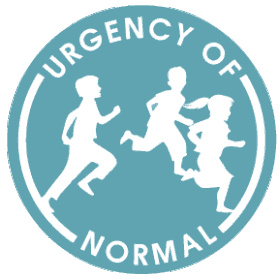Opinion: Medical professionals agree we should protect students’ health this fall. We don’t agree on how.
Life is not risk free, and we need to start considering the harms that we are perpetrating on our children in our public health quest to make our schools a zero-risk environment.
Brenda Najera works on a laptop in a classroom in Newlon Elementary School on Aug. 25, 2020, in Denver. (AP Photo/David Zalubowski)
As a community pediatrician and parent of three school-aged children, I can tell you that not all pediatric medical providers agree with the recent letter sent to Gov. Jared Polis and leaders of the Colorado Department of Public Health & Environment by the Colorado Chapter of the American Academy of Pediatrics in collaboration with state teachers unions.
This letter advocates for continued restrictions (such as quarantines) hinging on student vaccinations, mask-wearing and testing among those not immunized for the upcoming school year.
One would think that the medical community would be united in how to best prioritize our children, and yet we are not. The crux of this division speaks to the willingness to consider the balance of benefit and harm and the role of individual risk tolerance as equally important in our policy decisions. It is quite clear that this letter does not do this.
In fact, there are only two sentences in the entire letter that I think more accurately reflect what the focus should be for our kids:
Dr. Todd R. Porter
“[We must] ensure Colorado children will benefit from a healthier and more robust school year after the last 18 months of disruptions and challenges related to COVID-19.”
And: “These risks must be viewed in context of the significant disruptions that school closures bring.”
The letter advocates for the need to protect students and educators this fall, but does not define who needs protection. Are they referring to vaccinated students and adult staff? Eligible staff who have declined vaccination? Eligible unvaccinated students whose parents made an informed and risk/benefit based decision to send their child to school without the vaccine? Non-eligible unvaccinated elementary students who statistically are at much lower risk of catching, spreading or being hospitalized from the virus?
Answering these questions would help better understand the fixation with what is a hidden vaccine mandate for a non-FDA-approved COVID-19 vaccine and why they continue to concentrate on identifying every possible student case that statistics show rarely results in hospitalization or death among this group.
In citing COVID-related risks, the letter cites data on the more than 100 children hospitalized for multisystem inflammatory syndrome in children (MIS-C) in the state yet fails to cite the number of Colorado children who have been hospitalized for suicide attempts. It then mentions the “small but still tragic number of Colorado children and teens” who have died with COVID-19, yet again does not mention the number who have died from suicide despite suicide being declared the No. 1 cause of death in Colorado children ages 10 years and older.
Comparing these statistics is important to better understand what is killing our children more — is it COVID-19 or the burden of our public health response that prioritizes adults over children?
My perspective on this comes from being an eyewitness to the educational and social-emotional devastation my low-income pediatric patients have experienced over the past two academic years.
We have and continue to do great harm to our children. And yet, our media and medical community continue to silence the voices of dissenting opinions which do not contribute to the prevailing narrative.
These are the questions that our media should be asking:
Why do we not consider children and adults recovered from COVID-19 as being immune and able to participate in society without COVID restrictions?
And with our overall falling hospitalization and death rates in spite of our communities gathering in large groups mask free this summer, why are we talking about locking down our schools again this fall and further burdening our low-risk children for the purpose of identifying an infection that for the vast majority of children is no more than a cold?
As the recent letter to Gov. Polis said, the risks of COVID must be viewed in context of the significant disruptions brought on by these continued COVID school restrictions.
Life is not risk free, and we need to start considering the harms that we are perpetrating on our children in our public-health quest to make our schools a zero-risk environment.
Dr. Todd R. Porter of Jefferson County is a specialist in pediatrics and pediatric primary care in Denver.
The Colorado Sun is a nonpartisan news organization, and the opinions of columnists and editorial writers do not reflect the opinions of the newsroom. Read our ethics policy for more on The Sun’s opinion policy and submit columns, suggest writers or give feedback at opinion@coloradosun.com.



